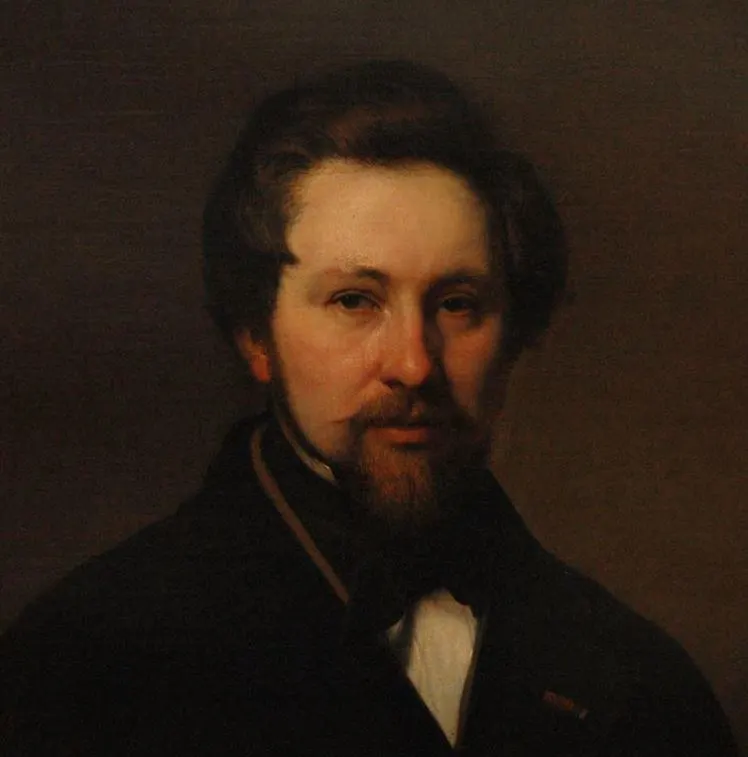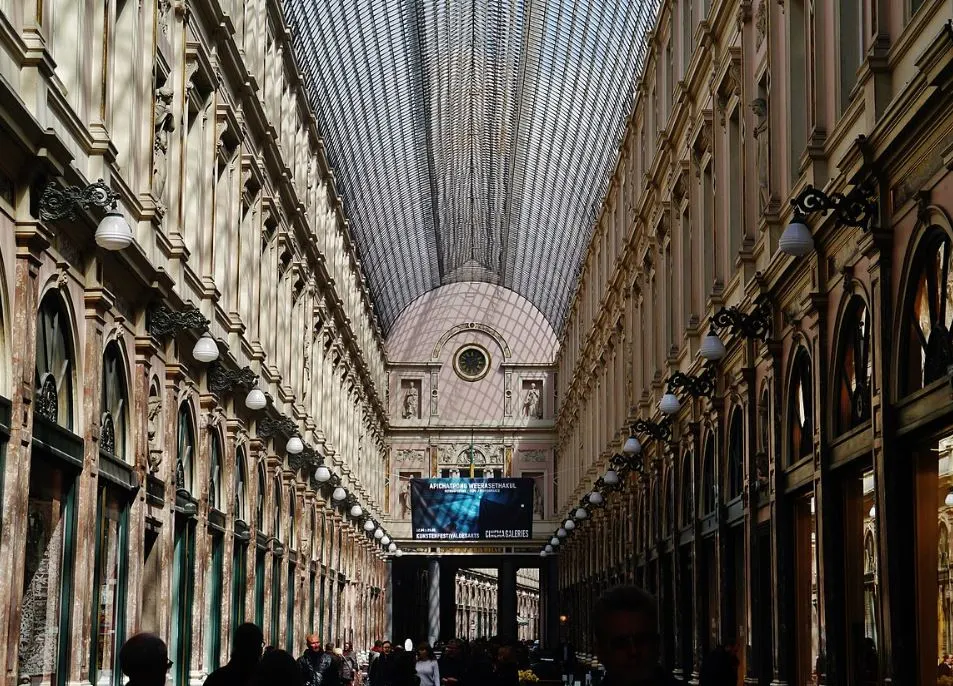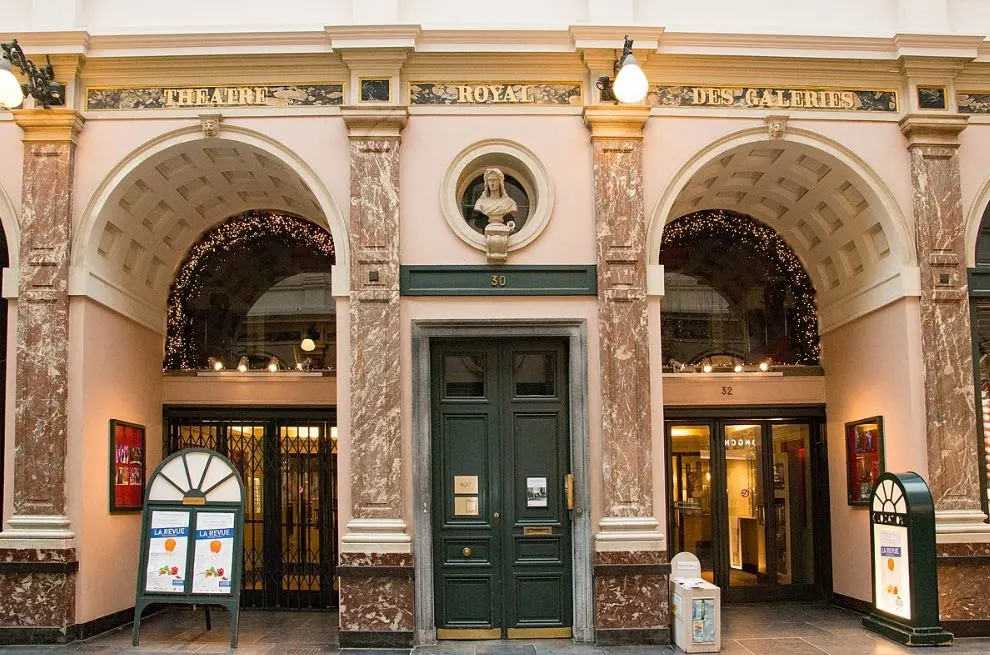Covered shopping arcades have been constructed in major cities all across Europe since the 19th century, including in the Belgian capital of Brussels.
In the middle of the historical heart of the city, you can find one of the most influential arcades ever constructed.
This amazing landmark in Brussels should definitely be on your bucket list when you plan to visit this beautiful city.
Let’s take a closer look at some of the most interesting facts about the Royal Saint-Hubert Galleries, a shopping arcade with a fascinating story to tell.
1. It’s located just northeast of the most famous square in Brussels
Just a short walk to the northwest of the Brussels-Central Station, you can find one of the most stunning covered shopping arcades in the world.
The Royal Saint-Hubert Galleries are locally known as the Galeries Royales Saint-Hubert or Koninklijke Sint-Hubertusgalerijen (Brussels is a bilingual city, French and Dutch).
The monumental entrance doesn’t give away too much of what you can find inside, but the shopping arcade is pretty awesome and features multiple historic stores.
Other famous landmarks in the vicinity are the Grand Place, the historic center of the city, and La Monnaie opera house which can be found near the northern entrance of the Galleries.
2. The idea came about shortly after Belgium was established in the 1830s

Belgium became independent from the Netherlands following the Belgian Revolution in the year 1830.
This was followed by a large number of construction projects that commemorated the newfound national pride.
The historic heart of Brussels featured several small alleys that were prone to vandalism and crime. This included a large section just one block northwest of Grand Place.
The idea to transform this dilapidated area in the city into one of the most amazing shopping arcades ever constructed came about in 1836.
The construction didn’t start until 1845 and was completed 2 years later on June 20, 1847.

3. The young Belgian architect was influenced by a famous courtyard in Florence
The man who had this idea was a young aspiring architect named Jean-Pierre Cluysenaar (1811-1880). The Dutch-born architect was only in his twenties at the time.
Although his idea to build a covered glazed shoçpping arcade with a length of over 200 meters (660 feet) took over a decade to be completed and he was in charge of the project.
He studied at the Royal Academy of Fine Arts in Brussels and became particularly interested in Italian Renaissance architecture.
This is reflected in the design of the 3-story shopping arcade which resembles the courtyard of the Uffizi Gallery designed by Giorgio Vasari in the 16th century.

4. The galleries consist of 3 separate arcades and are pretty long
It was impossible to construct a single shopping arcade in this area because of the layout of the narrow streets in central Brussels.
That’s why the Royal Saint-Hubert Galleries consist of 3 different shopping arcades that are referred to as the:
- Galerie du Roi or Koningsgalerij – the King’s Gallery
- Galerie de la Reine or Koninginnegalerij – the Queen’s Gallery
- Galerie des Princes or Prinsengalerij – the Princes’ Gallery
The two main galleries have about the same length but the Prince’s Gallery is significantly shorter. The total length of the complex is 213 meters (699 feet).

5. The Royal Saint-Hubert Galleries wasn’t referred to as such until the mid-1960s
The opening of the galleries in Brussels was a major event in the city. It was conducted by King Leopold I, the first king of the Belgians, and his two sons.
Although the 3 separate sections of the galleries are still referred to by their original name, the entire complex wasn’t referred to as the Royal Saint-Hubert Galleries until 1965.
The most striking feature of the galleries is the arched glass-paned roof which features a cast-iron framework.

6. It became a popular meeting place for locals in the 19th and 20th centuries
The entry of the galleries resembles that of the monumental entries found in Renaissance palaces. This didn’t mean that only the bourgeoisie visited this place, though.
It became the most popular meeting place for all members of society in the 19th century and continued this role into the 20th century.
The outdoor cafés in the heart of the city are a great place to relax. If you enjoy Belgian chocolate, then buying them at the Neuhaus chocolatier is something you can do here as well.

7. The King’s Gallery is home to a theater called the “Théâtre Royal des Galeries”
Most of the buildings inside the galleries are shops, cafés, and restaurants. There’s one remarkable building located in the King’s Gallery that stands out, though.
The Royal Theatre of the Galleries was designed by Jean-Pierre Cluysenaar as well and opened at the same time as the galleries in 1847.
It has a capacity of 850 seats and became one of the 3 main performing arts venues in Brussels along with the Royal Theatre of La Monnaie and the Royal Park Theatre.
Remarkably, another stunning theater called the Théâtre du Vaudeville was established here in 1884 and originally opened its doors as the Casino Saint-Hubert.

8. The Galleries are a historical monument of Belgium and might become a UNESCO site
The galleries have been a major tourist attraction in Brussels since they first opened their doors in the 1840s, and continue to attract millions of visitors every year.
That’s why they were listed as historic monuments of Belgium on November 19, 1986.
Because of their historic significance, they were also submitted to the tentative list of UNESCO World Heritage sites in 2008 so it’s possible they will be designated as such one day as well.
Do you plan to visit Brussels, Then this architectural highlight should definitely be on top of your bucket list!

